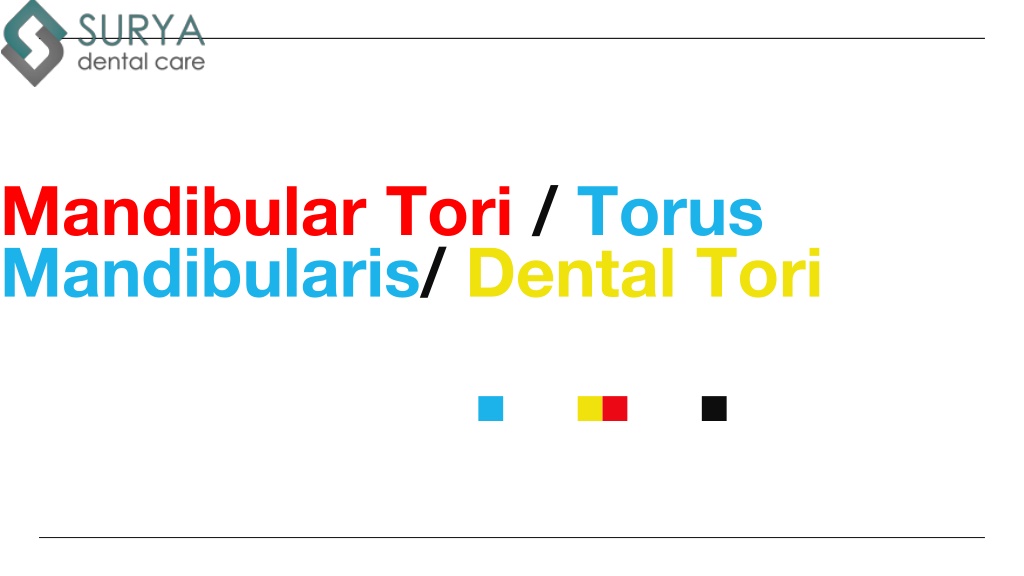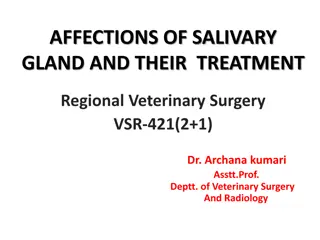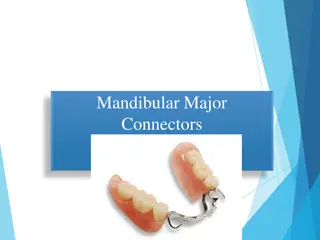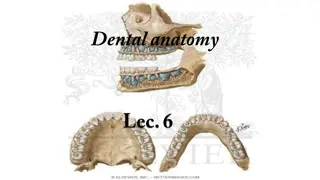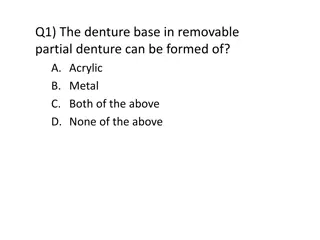Mandibular Tori
Dental Tori or Mandibular Tori is the growth of extra bone covered with normal gum tissues in the roof of the mouth. It does not require any treatment until it causes any complications. For more info visit: // /mandibular-tori-causes-diagnosis-and
Download Presentation

Please find below an Image/Link to download the presentation.
The content on the website is provided AS IS for your information and personal use only. It may not be sold, licensed, or shared on other websites without obtaining consent from the author.If you encounter any issues during the download, it is possible that the publisher has removed the file from their server.
You are allowed to download the files provided on this website for personal or commercial use, subject to the condition that they are used lawfully. All files are the property of their respective owners.
The content on the website is provided AS IS for your information and personal use only. It may not be sold, licensed, or shared on other websites without obtaining consent from the author.
E N D
Presentation Transcript
Mandibular Tori / Torus Mandibularis/ Dental Tori
Introduction to Mandibular Tori torus mandibularis Mandibular tori, also known as torus mandibularis, are benign bony growths located on the mandible, often covered by normal gum tissue. These painless growths typically do not require treatment unless they interfere with oral functions such as speaking or eating. Understanding their non-threatening nature is crucial for those who may be concerned about their presence in the mouth.
Causes of Mandibular Tori Genetic Influences Individuals with a family history of mandibular tori are more likely to develop this condition due to genetic predisposition. Teeth Grinding Bruxism, or the habit of grinding or clenching teeth, is associated with an increased likelihood of developing mandibular tori. Dietary Habits A diet high in saltwater fish, which is rich in vitamin D and polyunsaturated fats, may promote bone growth and contribute to the development of dental tori. Trauma and Age roof of the mouth Physical trauma to the jaw or roof of the mouth and being over 30 years old are both factors that may lead to the formation of mandibular tori.
Symptoms of Mandibular Tori Mandibular tori may cause difficulty in speaking clearly, as the growths can interfere with tongue movement. Patients may experience trouble chewing due to the presence of hard bumps, which can disrupt normal jaw movement. Swallowing can become difficult, especially if the tori are large, leading to discomfort or pain. Individuals may face challenges when fitting dentures or mouthguards, as the tori can affect the proper seating of these appliances. oral hygiene problems oral hygiene problems Food particles can become trapped between the tori, leading to bad breath and increased risk of oral hygiene problems.
Complications from Overgrowth Impact on Speech and Eating Overgrown tori can obstruct tongue movement, making speech difficult. Complications may arise when chewing, leading to discomfort or pain. Swallowing food can also become challenging due to the presence of tori. Oral Hygiene Challenges Dental tori can trap food particles, increasing the risk of bad breath. Difficulty in brushing and flossing may lead to plaque buildup. Poor oral hygiene due to tori can result in gum irritation or infection.
Diagnosis Process Visual Examination dentist During a dental visit, a dentist visually inspects the mouth to identify any abnormal growths or bumps that may indicate mandibular tori. X-ray Imaging X-rays help in locating the exact position of mandibular tori and assessing their relation to surrounding teeth.
Treatment Options Mandibular tori typically do not require treatment unless they interfere with daily activities like eating or speaking. When and How to Treat Mandibular Tori Surgery is recommended if the tori cause pain, discomfort, or complications with dentures and mouthguards. The removal procedure is performed by a maxillofacial surgeon, who administers local anesthesia to numb the area before surgery. During the procedure, a small incision is made in the gums to access and remove the tori and any excess bone, followed by closing the incision with stitches. Post-surgery, patients may require a recovery period of one to four weeks, during which they should follow specific care instructions to promote healing.
Post-Surgery Recovery Follow-Up Care Medication Management Dietary Adjustments Initial Recovery After the surgery, patients should rest and avoid strenuous activities for at least 48 hours. It's vital to keep the surgical area clean and free from irritation. During the first week, patients should consume soft foods and avoid hard, spicy, or crunchy items to prevent irritation of the surgical site. Hydration is also crucial. Patients may be prescribed pain relief medications and antibiotics. It's important to take these medications as directed and to complete the antibiotic course to prevent infection. Schedule a follow-up appointment with the dentist to monitor healing. The dentist will assess the surgical site and provide additional care instructions if necessary. Rest for 48 hours Avoid strenuous activities Maintain oral hygiene Eat soft foods Avoid hard and spicy foods Stay hydrated Take prescribed pain relief Complete antibiotic course Monitor for any adverse effects Schedule follow-up appointment Assess healing progress Receive further care instructions
Conclusion and Takeaways Mandibular tori are benign growths that generally do not pose health risks or require treatment unless they interfere with oral functions. Routine dental check-ups are essential for monitoring their Consulting a dentist development and promptly addressing complications. Consulting a dentist is important for individuals who notice changes in the size or number of tori to maintain optimal oral health.
T Thank You! hank You! https://www.suryadentalcare.com/ https://twitter.com/CareSurya https://www.facebook.com/suryadentaltrichy https://www.instagram.com/suryadentalsenthil/
